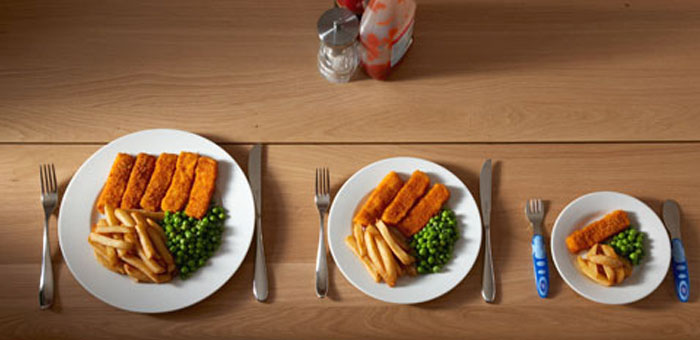Food allergies in the food truck industry have become more of a threat over the past few years. According to Food Allergy Research and Education (FARE), it’s estimated that up to 15 million Americans have food allergies.
Because of this, vendors have to be more careful with the food that they produce, and communicate any issues that could arise from eating certain menu items to the management, staff and then to the customers themselves. Communication includes clearly labeling menu items that could be troublesome to allergy sufferers. These eight foods are responsible for 90 percent of all allergic responses:
- Milk
- Eggs
- Peanuts
- Tree nuts
- Soy
- Wheat
- Fish
- Shellfish
REMEMBER: Just because an item isn’t included in this list doesn’t mean a customer can’t be allergic to it.
Serving Customers With Food Allergies
Last summer I went to a food truck event with a few friends, one is allergic to gluten. There is a very popular truck I’ve been to, but I didn’t think we would be able to go to it because they serve pasta dishes. Before I heading to the event, I did my research and discovered that this food truck had a gluten-free pasta dish. When, my friend, placed her order he specifically asked the server to make certain the pasta was gluten-free. As her order was delivered, he asked, “Was my pasta boiled in separate water from the wheat pasta?” He was assured it was prepared properly. Before we got to the next food truck line, my friend was in the closest Porta-John. I felt horrible and I will never eat at that truck again.
As journalist who frequently visits food truck kitchens, unfortunately, I observe cross-contact situations from time to time. I recently saw a food truck cook improperly plate a dish. He used a spoon used for standard dishes for a dish that was to be used for an allergic order without properly washing, rinsing, and sanitizing it. He had used the spoon to plate a dish that contained eggs. If the customer with a food allergy was allergic to eggs, and if I had not been there to catch the error, someone could have gotten sick, or worse; died.
Common Mistakes Made When Serving Customers With Food Allergies
Thermometers easily the most common source of cross contact in food trucks. They are often taken from one item only to another without being properly cleaned and sanitized. A simple solution is to use color-coded thermometers (and other kitchen equipment).
Many people think that using hand sanitizers is an effective way to manage food allergens, this is not accurate. Antibacterial gels are not effective in removing food proteins. Changing gloves and washing hands with soap and water are the two most effective methods to eliminate allergen exposure.
Educate Your Team
Vendors must educate your food truck staff on the importance of safe food handling. Food truck owners must have procedures in place to minimize the risk of cross contact. Here are a few tips to make your food truck friendly to food allergic customers.
- Communicate with your team, and train them on food allergy protocols.
- Create a separate workspace in your truck to prepare allergen-free/gluten-free meals.
- Store common food allergens in a separate locations.
- Utilize color-coded allergy tools in your truck to reduce the risk of cross-contact.
- Don’t use the same fryer or oil for French fries that you use for breaded products, fish, or foods containing nuts.
- NEVER offer a customer assurance when you are not certain if an item contains an allergen.
- Serve allergen-friendly dishes in different shaped or colored containers so they can be easily identified by your staff.
- Make certain all serving and prepware is properly washed, rinsed, and sanitized prior to reuse.
- Be willing to modify dishes for food allergic guests, using different sauces, sides, or other ingredients to accommodate their special dietary restrictions.
Cross Contact vs Cross Contamination
Teach your staff the difference between cross contact and cross contamination.
- Cross Contact. This occurs when an allergen is mistakenly transferred from a food containing an allergen to a food that does not contain the allergen. This includes chopping peanuts on a board and then chopping vegetables on that same board.
- Cross Contamination. If you or your staff put raw chicken on a board, and then chop vegetables on that same board, you risk cross contamination. You are spreading bacteria from the raw poultry onto the vegetables.
The primary difference between cross contact and cross contamination is that anyone can become ill from cross contamination if they eat foods that have touched raw meats or poultry. Cross contact is dangerous only for customers with food allergies.
RELATED: 5 Common Food Safety Mistakes You Want Your Food Truck Staff To Avoid
The Bottom Line
It’s vital that everyone on your staff knows how to handle an order for someone with food allergies. By doing this, your truck will earn brand loyalty, and therefore, increased profitability.
Before you begin developing a food allergy prevention plan to better serve your customers, remember a few basics. Take all food allergies seriously. Treat all customers with food allergies with respect. And remember, there are no safe shortcuts when accommodating a customer with food allergies.
How do you handle food allergies in your food truck? Share your thoughts on this topic in the comment section or social media. Facebook | Twitter




